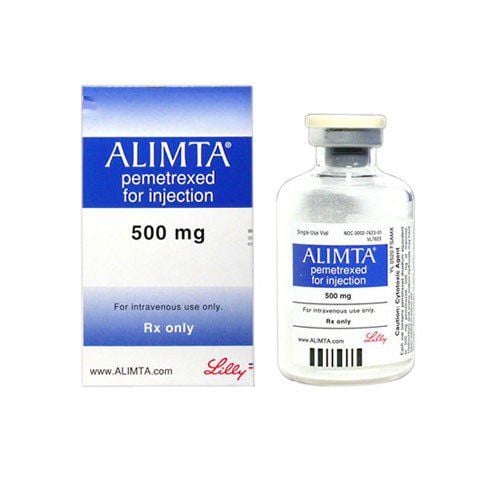This is an automatically translated article.
Ovarian cancer is a common disease in women of reproductive age, after cervical cancer. Olaparib is considered an effective adjuvant treatment for ovarian cancer.
1. What are the uses of Olaparib?
Olaparib is a mammalian PARP (poly ADP ribose polymerase) inhibitor. PARP is a protein that plays an important role in helping damaged cells repair themselves. Cancers associated with BRCA1 or 2 mutations appear to rely on PARP to repair damaged DNA in cancer cells, allowing them to continue dividing. By inhibiting PARP, tumor growth can be slowed or stopped. Olanib 50 mg is effective in inhibiting the action of BRCA. This is a genetic mutation that can occur in patients with ovarian cancer. Olaparib will help stop or shrink the tumors of people with advanced ovarian cancer.
2. How to take Olaparib
Olaparib is available in tablet form. Use the drug after meals. The tablets should be swallowed whole and should not be chewed, broken or crushed. If you miss a dose, take your next dose at the usual scheduled time.
Recommended dosage:
The recommended dose of olanib 50 mg is 400 mg (8 tablets of 50 mg); Take orally twice a day, 4 tablets each time, for a total daily dose of 800 mg. Continue treatment until disease progression or doctor's instructions to stop the drug. To control adverse reactions, your doctor will consider interrupting your treatment dose or reducing your dose. Recommended dose reduction is 200 mg (4 50 mg tablets): Take orally twice daily, for a total daily dose of 400 mg. Final dose reduction is reduced to 100 mg (2 50 mg tablets): Take orally twice daily, for a total dose of 200 mg daily.
3. Storage and handling
This medicine should be stored in its original, labeled packaging, at room temperature and in a dry place (unless otherwise directed by your drug supplier or pharmacist). Keep container out of reach of children and pets.
If your caregiver is preparing a dose for you, they should wear gloves or pour the medication directly from the container into the lid, small cup, or directly into your hand.
4. Possible side effects of Olaparib
When using the drug, you may experience some of the following side effects:
Nausea or vomiting; Fatigue: Fatigue is very common during cancer treatment and is a feeling of exhaustion that often does not subside with rest. During cancer treatment and for some time afterward, you may need to adjust your schedule to manage fatigue. Diarrhea: To limit this side effect, you need to avoid raw fruits, vegetables, whole grain breads, cereals and seeds. Soluble fiber is found in some foods and absorbs fluids, which can help relieve diarrhea. Drink 8-10 glasses of non-alcoholic, decaffeinated water each day to prevent dehydration. Low white blood cell count Muscle or joint pain/headache and headache: If you have these symptoms, tell your treating doctor. Kidney toxicity: This drug can cause kidney toxicity, which your doctor will monitor using a blood test to check your creatinine level. Notify your doctor if you notice decreased urine output, dark urine, blood in your urine, or swelling in your ankles. Lung problems : Patients may develop pneumonia while taking this medicine. Notify your treating physician immediately if you develop any new or worsening symptoms, including difficulty breathing, shortness of breath, cough, or fever. Secondary Cancer: Secondary cancer is a disease that develops as a result of cancer treatment for another cancer. This is quite rare, but you should take the risk. In most cases, chemotherapy-related secondary cancers are blood cancers (leukemia, lymphoma). This can happen years after treatment. This usually involves repeated treatments or high doses. Blood clots: This drug may increase your risk of blood clots forming (DVT or PE). Symptoms may include: swelling, redness or pain in the extremities, or difficulty breathing. If you experience symptoms of these problems, notify your doctor right away for prompt treatment. Fertility problems: Exposure to this medicine can cause birth defects in your unborn baby, so you should not become pregnant or father a child while you are taking this medicine. You should not breast-feed while you are taking this medicine or for 1 month after your last dose. Olaparib is a prescription drug so make sure you consult your doctor before using it. Hopefully the article has provided you with useful information about the uses, dosage and precautions when using Olaparib.
Please dial HOTLINE for more information or register for an appointment HERE. Download MyVinmec app to make appointments faster and to manage your bookings easily.













